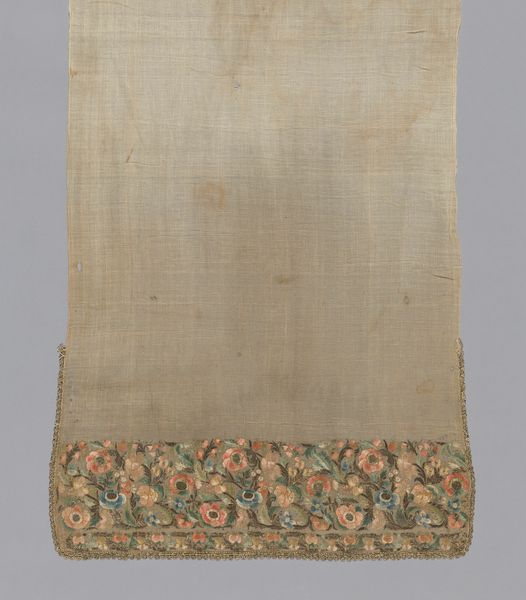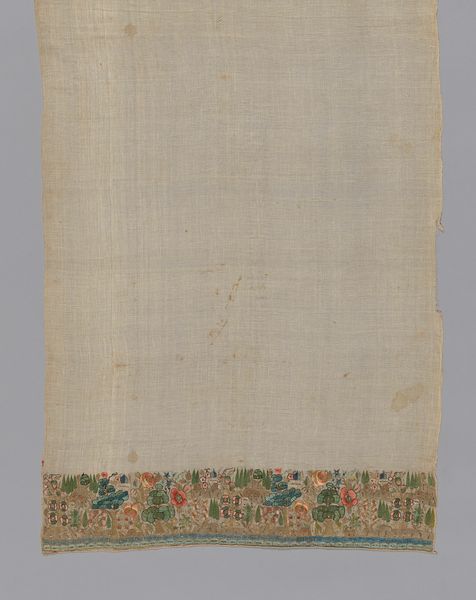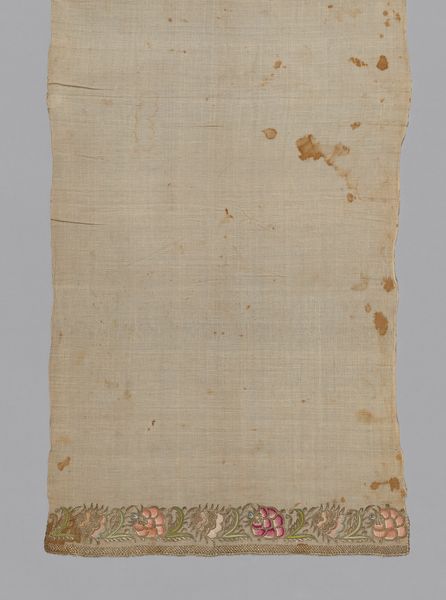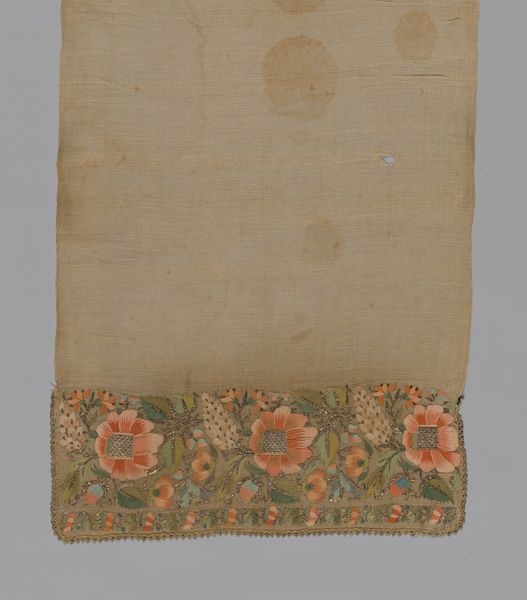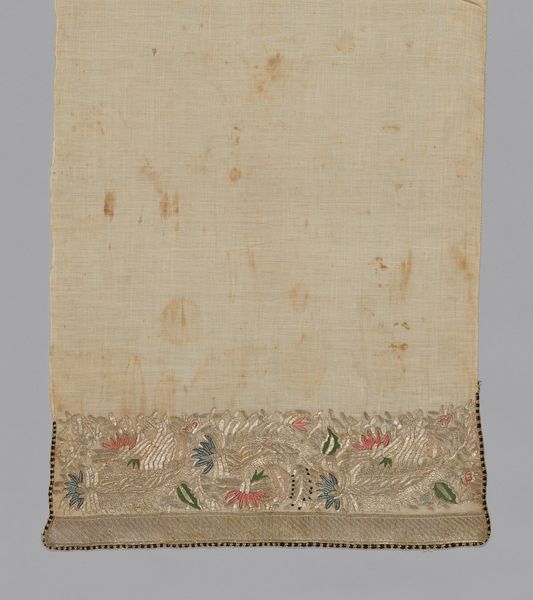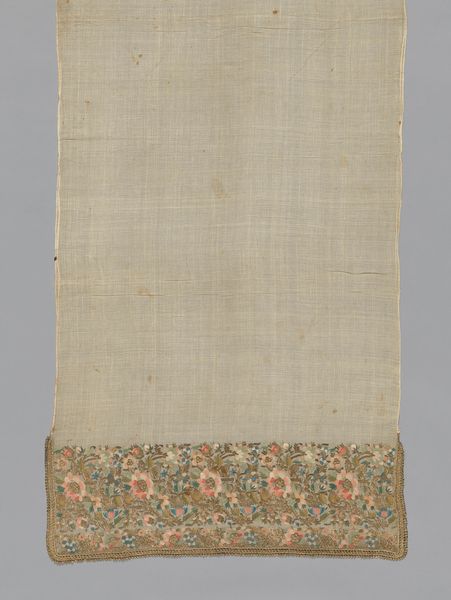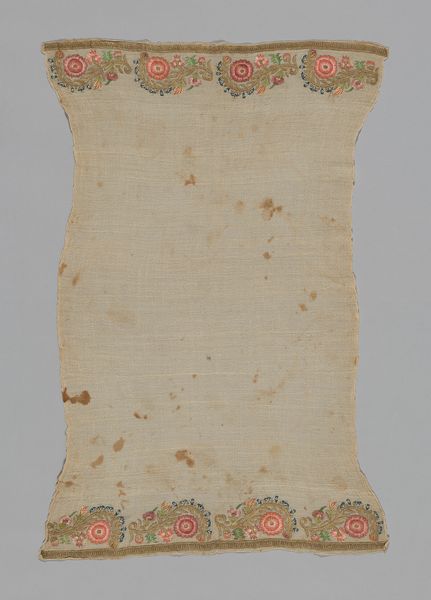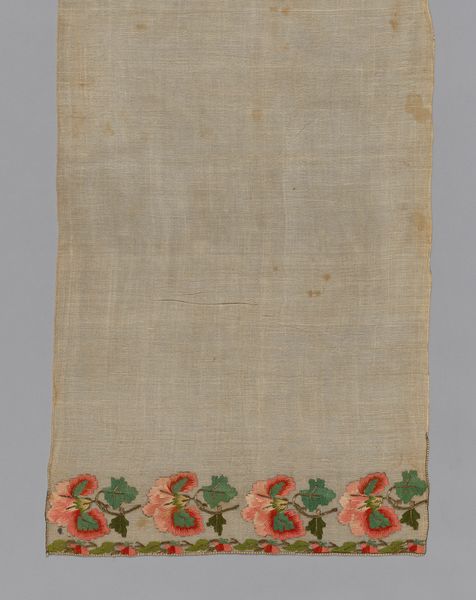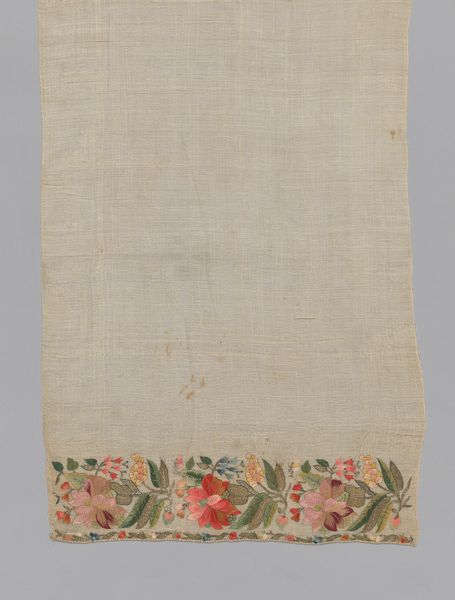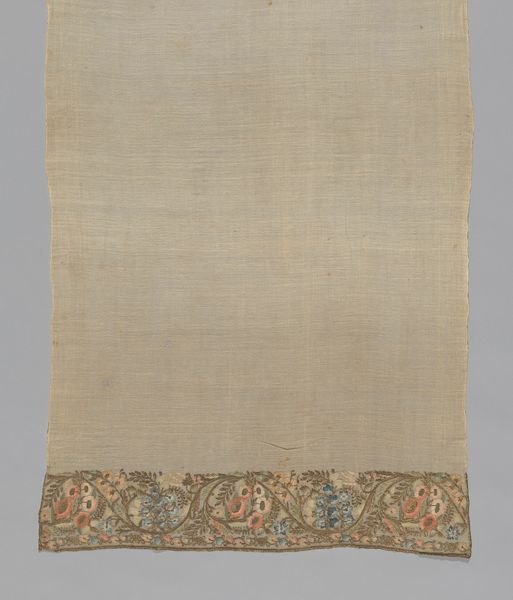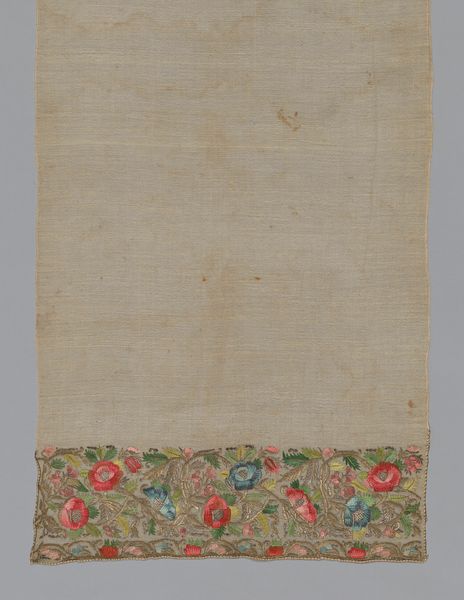
fibre-art, weaving, textile
#
fibre-art
#
weaving
#
textile
#
historical fashion
#
fabric design
#
decorative-art
Dimensions: 187 × 66.4 cm (73 5/8 × 26 1/8 in.)
Copyright: Public Domain
Editor: This anonymous "Towel or Napkin," dating from 1850 to 1900 and held at the Art Institute of Chicago, strikes me with its delicate floral embroidery along the hem. What can you tell me about how such a simple object intersects with social history? Curator: It's tempting to dismiss this as mere 'decorative art,' but objects like this tell fascinating stories. Textiles in the 19th century were deeply embedded in domestic life and women’s labor. Who made this, and under what circumstances? Was it a labor of love, a symbol of status, or even a means of economic survival? Consider the material itself - the plain weave linen, contrasted with the elaborate embroidery. What does that contrast say about the social divisions of labor? Editor: That's a great point. So, its display in a museum setting elevates its status, I suppose? Curator: Precisely. Placing this “Towel or Napkin” in a museum setting transforms it. The object is being given a different type of attention, no longer purely utilitarian but instead a vessel of artistic and cultural expression worthy of careful study and contemplation. Does showcasing everyday items change the way we value women's work from this period? Editor: Definitely. I never would have thought about the symbolism behind such an object if I just saw it casually. The embroidery almost looks like a form of rebellion against the plainness of the linen. Curator: Or, perhaps, a marker of leisure and skill – something that separated the owner, the user, or maker from those who could not afford to dedicate their time to such embellishment. Museums played a critical role in establishing taste and promoting certain ideas about beauty and craftmanship. What, in your view, does exhibiting this item accomplish today? Editor: I think it gives validity to artistic traditions outside the "fine art" canon, broadening the definition of art itself. Thank you! Curator: Indeed. It prompts us to question those very definitions and acknowledge the artistic merit and historical value of everyday objects and practices. My pleasure.
Comments
No comments
Be the first to comment and join the conversation on the ultimate creative platform.
